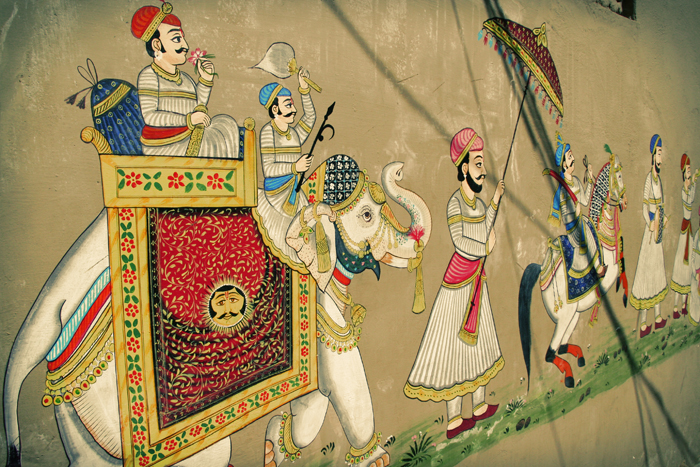
7月、パリ・オートクチュールウィーク。
1月と7月の年に2度、オートクチュールコレクション期間中にヴァンドーム広場の名門ジュエラーがこぞって最新作を発表する恒例の“ジュエリーデイ”がある。世界各国のトップジャーナリストや高級店のバイヤー、VIP顧客が集う発表会では、イマジネーションを喚起し甘い欲望を掻き立てる絢爛豪華なハイジュエリーが百花繚乱。そのほとんどは1点もの、夢のようなユニークピースばかりだ。新しい輝きを取材するために訪れたパリで、思いもよらぬインスピレーションに遭遇した。
“宝石のひとつひとつには、固有の魂が宿っている”
——そう信じたのは、ヴァン クリーフ&アーペルの二代目、アーペル三兄弟の長男クロード・アーペル。ビジネスパーソンとして誰よりもシャープに働き、芸術と誰も挑戦したことのない冒険に情熱を注ぐ。そんな生き方を貫いたクロードとピエールのアーペル兄弟は、魂の炎を秘めた宝石を探し求めて1950〜1970年代に世界中を旅したという。とりわけクロードは不屈の冒険者で、エジプト、レバノン、中国、タイ、カンボジアを経て日本へも辿り着き、世界一周を何度も制覇。自ら“ジュエル サファリ”と称したインドへの旅は12回以上にも及んだ。当時のメディアから「ボンベイのダイヤモンド王」「マハラジャの友人」と呼ばれていた彼は、おとぎ話さながらのマハラジャの宮殿で数々の伝説的な宝石に出会い、持ち帰った宝物とともにメゾンのクリエイションは魅惑の異国情緒で彩られた。このエピソードと宝石そのものに備わる美にオマージュを捧げ、希少性の高いストーンから始まるドラマを華麗なデザインに昇華させたのが、ヴァン クリーフ&アーペルの最新コレクション「ピエール ド カラクテール ヴァリアシオン」だった。
象の背中にまたがったインド旅行中のアーペル兄弟の写真と、鮮烈なコントラストを放つハイジュエリーピースを目にした時、私の個人的なインドの記憶がカラフルな色を伴って一気によみがえった。3年前、5週間南北をさまよった初めてのインドで、めまいを思わせる魔法のような出会いがあったことを。灼熱の大地で人々と街が発する信じ難いカオスとエネルギー、自然と人工が織りなす強い色彩、サリー姿の女性たちのエキゾティックな色香、生と死が隣り合わせの非日常的な光景……。桃色の建物が立ち並ぶ通称ピンク・シティ、ジャイプールをはじめ、黄金色に輝く砂漠のオアシス、ジャイサルメール、青に染まる城塞都市ジョドプール、白亜のパレスが湖に浮かび上がる神話的なウダイプールなど、ラジャースターン州の各地で眺めたマハラジャの宮殿と時空を超える風景に思いを馳せた。たとえば1799年に建てられたジャイプールのシンボル、無数の小窓と透かし彫りを施した「風の宮殿」。宮廷の貴婦人たちが自らの姿を見られることなく、街の喧噪や祭の様子を小窓から見て楽しんでいたという。マハラジャの寵愛を受けた淑女たちの密やかなさざめきが、いくつもの夜を超えて今にも聞こえてきそうだ。
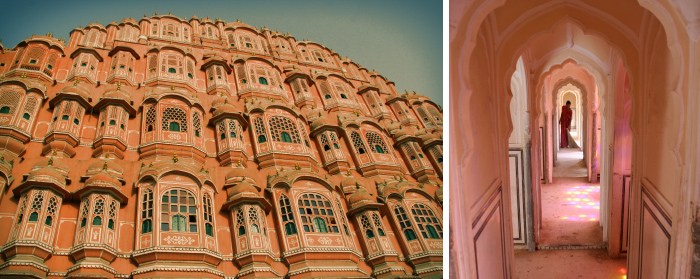
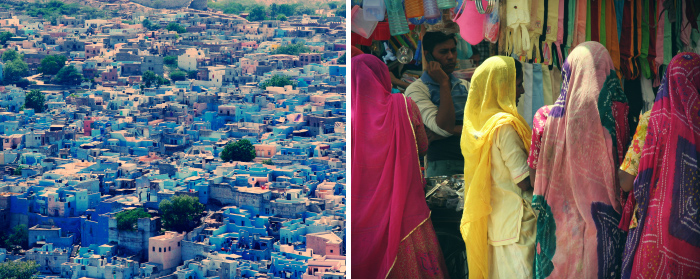
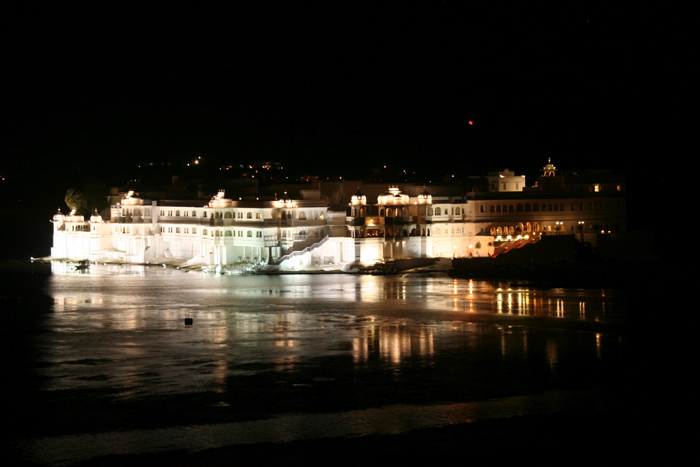
インドで出会った宝物のひとつは、色彩観と言えるかもしれない。洪水のように日常にあふれる色がこんなにも感性を刺激し心を豊かににすることに驚かされ、色彩に固有の感情が宿ることを知った。あの旅から3年が経ち、未知への冒険から自分の足が遠のいていることを少し寂しく思う。宝物はすぐ近くにも遠くにも、思いがけない場所にある。宝石みたいに発光する何かを求めて、小さな冒険を続けようと心に誓った。
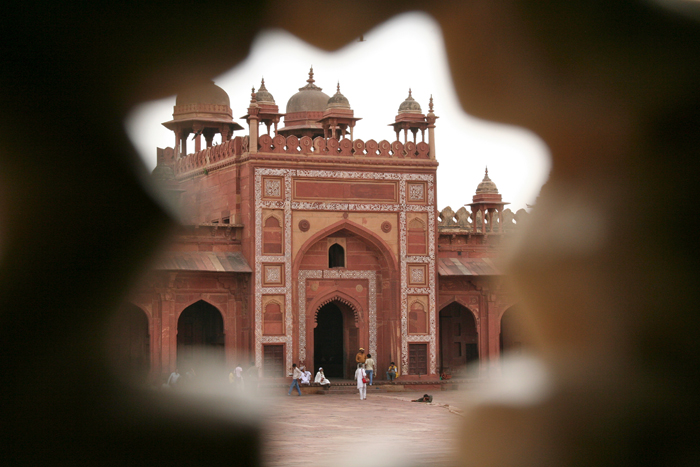
July, Paris Haute Couture Week.
Twice a year in January and July during the Haute Couture Season there is an annual “jewelery day” where name jewelers in Place Vendôme flock together to present their latest works. At the presentations with VIP guests, luxury store buyers and top journalists from all over the world, it was a bright garden of high, gorgeous jewelry stirring up indulgent desires and evoking one's imagination. Almost all of them were unique one pieces like from a dream. Although I had come to Paris to write about the new shining jewels, I came upon unexpected inspiration.
Van Cleef & Arpels's eldest brother of the three Arpels's, Claude Arpels, believes that “Every stone has a soul of its own.” He is extremely passionate about adventures in challenges no one has done before with arts and works more sharply than anyone else. Brothers Claude and Pierre have kept on their lifestyle, traveling the whole world looking for jewels with soulful passion. Claude was a particularly indefatigable traveller and conquered the world over many times, going from Egypt, Lebanon, China, Thailand, and Cambodia and ending up in Japan. His trip to the event he call the “Jewel Safaris” has happened more than 12 times. In the media at the time he was called “Diamond King of Bombay” and “Friend of Maharajas”. He encountered numerous classic gems at the Maharajas’ palaces from a fairytale and the creation maison colored them with enchanted exoticism with the treasures brought back with them. Van Cleef & Arpels's latest collection “Pierres de Caractère Variations” sublimated the drama starting with the scarce gems, paying homage to the beauty of the gems themselves and to these stories.
When I saw the photograph of the Arpels brothers on their trip in India riding atop an elephant and the high jewels giving off a vivid contrast, I went back to my personal memories of India's colorful colors. Three years ago for five weeks wandering in the north and south of India for the first time, encountering vertigo-inducing magics. The incredible chaos and energy of the people in the fiery land, the strong natural and artificial colors woven together, the exotic beauty of Sari-clad women, the unusual scenery of life and death side-by-side... I recalled the scenery surpassing time and the Mahajara Palace I viewed in every part of Rajasthan, from Jaipur, the Pink City with peach colored houses everywhere to the golden desert oasis, Jaisalmer, the blue castled city of Jodhpur, to the mythical white palace floating in Udaipur. For example, the symbol of Jaipur built in 1799, the Hawa Mahal with its open design in wickerwork design and myriad of small windows. The imperial court women were said to have enjoyed watching the festivals and fights in the town from the small windows without being seen. Even now it feels like you can hear some of Mahajara's favored ladies' stirring.


 インドで出会った宝物のひとつは、色彩観と言えるかもしれない。洪水のように日常にあふれる色がこんなにも感性を刺激し心を豊かににすることに驚かされ、色彩に固有の感情が宿ることを知った。あの旅から3年が経ち、未知への冒険から自分の足が遠のいていることを少し寂しく思う。宝物はすぐ近くにも遠くにも、思いがけない場所にある。宝石みたいに発光する何かを求めて、小さな冒険を続けようと心に誓った。
インドで出会った宝物のひとつは、色彩観と言えるかもしれない。洪水のように日常にあふれる色がこんなにも感性を刺激し心を豊かににすることに驚かされ、色彩に固有の感情が宿ることを知った。あの旅から3年が経ち、未知への冒険から自分の足が遠のいていることを少し寂しく思う。宝物はすぐ近くにも遠くにも、思いがけない場所にある。宝石みたいに発光する何かを求めて、小さな冒険を続けようと心に誓った。










